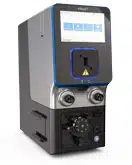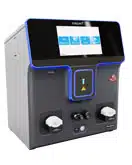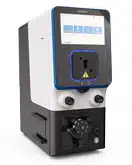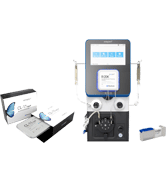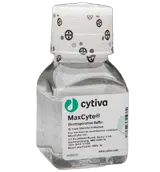MaxCyte Minutes – Nov 2018 – C
Industry News, Maxcyte Science, Updates & Events
CRISPR-Cas9 burst onto the scientific scene with the publication of Feng Zhang’s breakthrough paper in October 2012. Since then, gene therapy has advanced in an unprecedented manner. As is nearly always the case with the maturation of complex and powerful technologies, there have been many exciting wins and a number of serious challenges. So, what is the state of CRISPR-Cas 9?
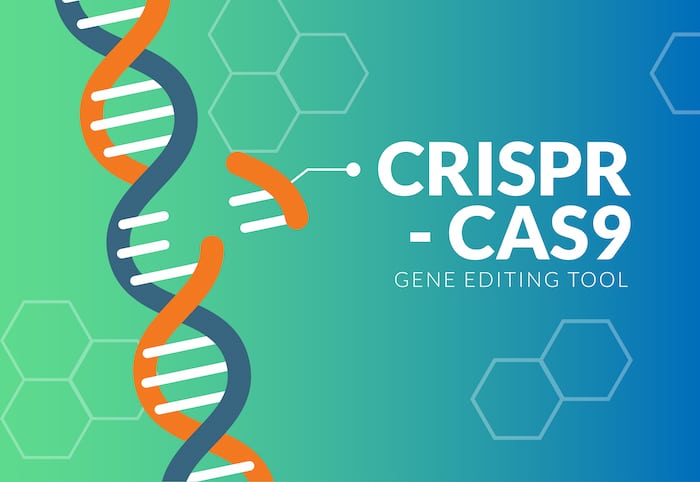
While we’re still a long way from CRISPR-Cas9 enabled gene therapies treating or curing the multitude of disease states that can be addressed with this technology, very significant progress has been made.
The first clinical trial backed by a U.S. company for a CRISPR-Cas9 enabled therapy launched in September of this year. CRISPR Therapeutics and Vertex Pharmaceuticals collaborated to develop a therapy for the blood disorder β-thalassemia. The trial, according to ClinicalTrials.gov, is a single-arm, open-label, multi-site, single-dose Phase 1/2 study in up to 12 subjects with transfusion-dependent β-thalassemia (TDT). The study will evaluate the safety and efficacy of autologous CRISPR-Cas9 modified CD34+ human hematopoietic stem and progenitor cells (hHSPCs) using CTX001. Although the trial is beginning with 12 subjects, it will likely be expanded to 45.
Scientists at the University of Texas Southwestern have used CRISPR gene editing to halt the progression of Duchenne muscular dystrophy (DMD) in a large mammal for the first time. The research, published in Science, documents unprecedented improvement in the muscle fibers of dogs with DMD. DMD is caused by a mutation that inhibits the production of dystrophin, a protein critical for muscle function, and it is the most common fatal genetic disease in children.
Another exciting breakthrough occurred in 2017. Scientists used CRISPR-Cas9 methods to successfully edit genes in human embryos to repair a common and serious disease-causing mutation, producing apparently healthy embryos. The study, published in Nature in August 2017 advances the possibilities of gene editing one day protecting babies from a variety of hereditary conditions.
While CRISPR-Cas9 is facilitating tremendous progress, safety concerns have also surfaced. However, it is important to note, that the paper published in May 2017 that set off many safety alarm bells – “Unexpected mutations after CRISPR–Cas9 editing in vivo“ – received an Editorial Expression of Concern by the paper’s publishers, Nature Methods. Shortly thereafter, the paper was retracted. Ultimately, the work cited in the paper lacked the appropriate controls and sample size to be scientifically conclusive or even credibly indicative.
However, scientists at the Wellcome Sanger Institute are also raising caution flags. Their researchers found many CRISPR-Cas9 impacted cells had large genetic rearrangements such as DNA deletions and insertions. This could cause important genes to be switched on or off. In addition, they found that some of the genome changes were too far away from the target site to be seen with standard genotyping methods.
Given the magnitude of CRISPR-Cas9 gene editing technology, both tremendous progress along with safety concerns and other challenges are not surprising. Additionally, the scientific knowledge acquired through CRISPR-Cas9 work is building on itself resulting in the development of platforms and approaches based on CRISPR-Cas9 knowledge.
For example, scientists at the ETH in Zurich, Switzerland have been working on a cure for phenylketonuria (PKU) — a metabolic disorder caused by an enzyme deficiency. They identified that the CRISPR-Cas9 approach doesn’t work well in very slowly dividing or nondividing cells and tissues.
The ETH team developed a strategy of base editing enabling genome editing without forming dsDNA breaks and without relying on homology-directed repair (HDR). “Instead, base editors comprising a deaminase enzyme fused to a catalytically dead Cas9 enzyme (dCas9) can convert a C-G to T-A base pair, or vice versa,” according to an October 9, 2018 GEN article. This work is based on the hypothesis that base editors allow precise correction of disease-causing mutations in nondividing hepatocytes and that these edits can be made quickly enough to cure PKU. While still far the clinic, this work builds upon CRISPR-Cas9 platform knowledge and shows great promise.
The final area of both challenge and progress to address within this piece is the essential question of how to deliver the gene editing machinery into the required cells and tissues for the desired therapeutic outcome.
In a June 2018 article in The Atlantic, CRISPR-Cas9 pioneer Feng Zhang commented, “The types of delivery systems we have are still really limited. For many of those diseases, we just don’t have the right delivery systems. It’s very likely that different tissues will require different approaches.”
“We are excited at the advancements in fundamental biology and development of breakthrough gene and cell therapies that our partners are making every day using CRISPR and the MaxCyte technology. Our vision has always been to drive the evolution of cell engineering to overcome delivery challenges and accelerate the development of better, more efficacious medicines. CRISPR-Cas9 and other approaches to gene editing is an area we have the privilege of seeing that vision realized.”
– Doug Doerfler, CEO of MaxCyte
Poster: GMP-compliant, Non-viral CRISPR-mediated Process Correcting the Sickle Cell Disease (SCD) Mutation in SCD Patient CD34+ Cells Achieves 60% Wild Type Adult Hemoglobin Expression in Differentiated Erythrocytes
- Therapeutically-relevant levels of SCD mutation correction are achieved using a non-viral cell engineering approach
- The gene correction procedure resulted in consistent gene correction efficiency
- The achieved level of gene correction leads to ≥90% HbA expression
- The correction rate is believed to be therapeutically beneficial for SCD patients
Tips from our Experts:
Q: Can I transfect ribonucleoproteins (RNPs) rather than plasmids encoding CRISPR-Cas9?
A: MaxCyte’s cell engineering technology is optimized for highly efficient transfection of multiple loading agents into many challenging cell types, including mammalian and insects cell lines, stem cells and primary hematopoietic cells. Optimized electroporation parameters allow any type of macromolecule, including RNPs, to be loaded with nearly 100% efficiency. Gene James Brady Ph.D.editing rates will vary based on guide RNA sequences and other variables unrelated to transfection, but process optimization for CRISPR-Cas9 and other genome modification technologies can be easily achieved by varying a few key experimental parameters, such as electroporation energy and loading agent concentrations.
James Brady, Ph.D.
Vice President, Technical Applications

Upcoming Event:
Look for us or request a meeting! [email protected]
Antibody Engineering & Therapeutics Trade Show • Booth 201
December 9-13, 2018 • San Diego, CA
